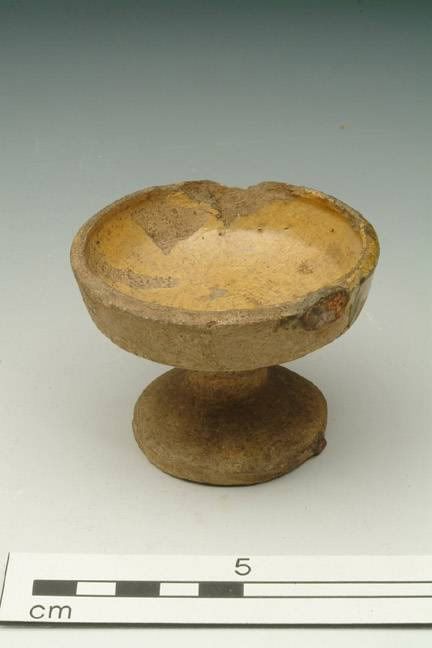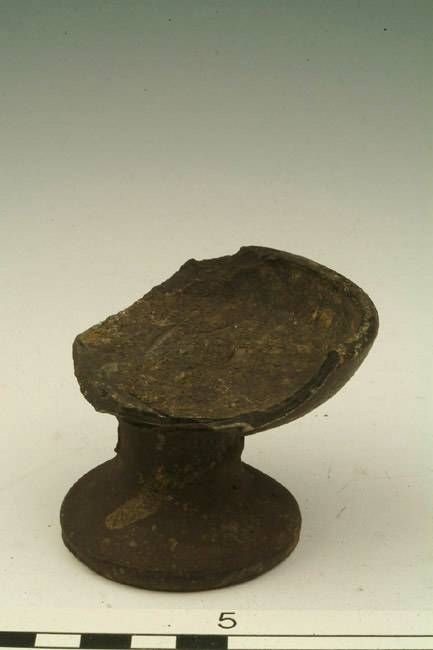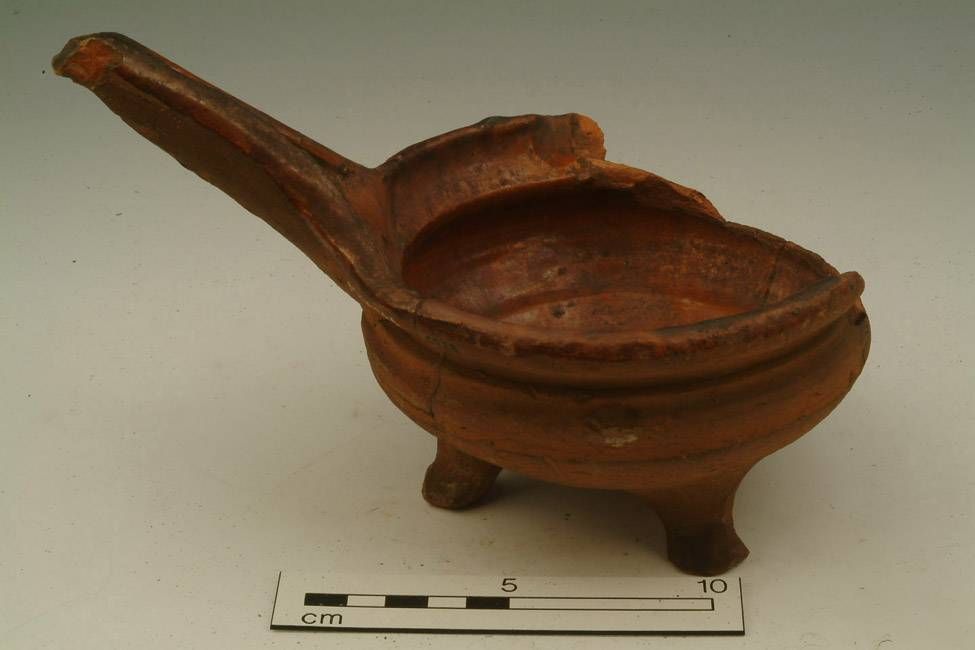Salters
Accession number: 5904
Collection place: Surrey/Hampshire border
Production date: 1551-1700
Material: ceramic; earthenware
Measurements: H 61 mm
Museum Section: Post-Medieval
Summary: Surrey/Hampshire border ware salt with a yellow glaze on the nowl and on underside of the bowl in places. There are kiln scars on the rim and some of the rim is chipped.
Location: Object stored at Mortimer Wheeler House (Ceramics and Glass store)
Sub-category: Surrey/Hampshire border ware.

Here is another one for good measure.
Accession number: 83.463/25
Collection place: Surrey/Hampshire border
Production date: 1567-1633
Material: ceramic; earthenware
Measurements: H 58 mm; D (base) 54 mm; (rim - incom) 85 mm appro
Museum Section: Post-Medieval
Summary: Surrey/Hampshire border ware pedestal dish with a green glaze on the outside. Part of the bowl is missing.
Location: Object stored at Mortimer Wheeler House (Ceramics and Glass store)
Sub-category: Surrey/Hampshire border ware.

From the broken one, you can see more how it is shaped and works more.
Labels: earthenware, english, Post-Medieval, salt, salter


